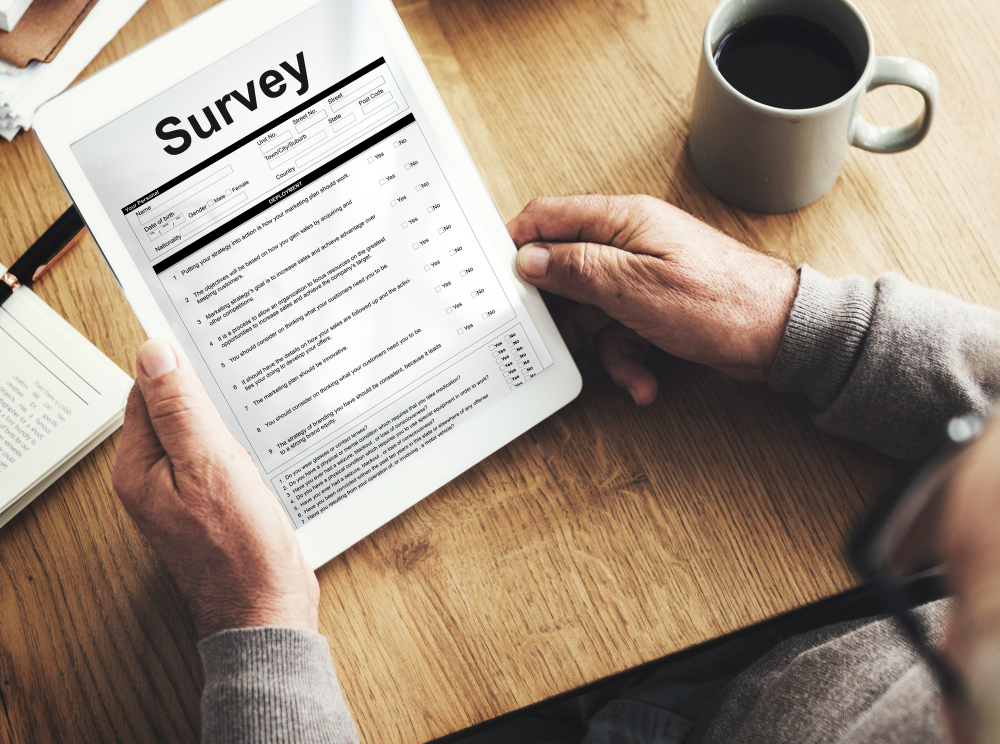Surveys are a powerful tool for companies looking to improve their products and services. They provide valuable insights and help build strong relationships with consumers. However, convincing people to complete a survey can be a challenge. In this article, we’ll explore what surveys are, their importance, and, most importantly, the strategies to ask someone to complete a survey successfully.
What is a Survey?
A survey is a list of questions designed to gather information on a specific topic from a particular group. These questions can be multiple-choice or open-ended, and the data collected from surveys is used by organizations to understand consumer opinions about their products or services, ultimately aiming to improve them.
Why are Surveys Important?
Surveys are crucial in helping researchers and businesses gather information and insights. Psychologists use surveys to understand human behaviour, while companies utilize surveys to learn about their customers and their performance in the market. Here are some key advantages for businesses that use surveys:
- Foster Customer Participation with a Brand: Surveys engage customers and make them feel valued, fostering a sense of connection with your brand.
- Improve Customer Satisfaction: Gathering feedback through surveys allows you to identify areas to enhance customer satisfaction.
- Help Determine Product or Service Quality: Surveys provide invaluable data for assessing the quality of your offerings.
- Provide Useful Data Through a Cost-Effective Method: Surveys are a cost-effective way to gather data, making them an attractive option for businesses.
How to Ask Someone to Fill Out a Survey
When it comes to asking someone to complete a survey, your approach is crucial. Here are some key strategies to keep in mind:
1. Make Your Subject Line Interesting
The first step is to grab the recipient’s attention. Craft an engaging subject line that entices them to open your survey email. Examples include:
- Personalization: “Lance, help us decide what design to use in our next T-shirt launch.”
- Ask a Question: “Can you answer five questions to help us improve our company?”
- Complimentary: “You made our top 50 customer list! Tell us what you think.”
- Offer Incentives: “Get 25% off for sharing your opinion!”
2. Greet the Recipient
Personalize your greeting according to your company’s tone. A more relaxed company culture might use “Hey, Madeline!” while formal companies may opt for “Dear Lucy.”
3. Explain Your Invite
Provide context for why the recipient is receiving the survey invitation. For example, “We invite you to take our survey about our recently released product since you bought this product on our website.”
4. Offer an Incentive
To boost completion rates, offer an incentive. Highlight the benefits and importance of their feedback. Consider incentives like prize draws, discounts, or showcasing how past feedback has improved products.
5. Inform Recipients of the Survey’s Length
Transparency is essential. Let them know how long the survey will take, helping them prepare and commit to it. You can gather data on survey length by having team members complete it.
6. Thank the Recipient
Express gratitude for their time. This reinforces the value of their contribution and shows appreciation for their effort.
7. Send Feedback
After collecting data, create a follow-up message. Share insights from the survey, such as graphs, and explain how the data impacts your company and future changes.
Tips for Getting Respondents to Fill Out a Survey
To improve your survey response rate, consider these tips:
- Keep Your Survey Short: Shorter surveys are more likely to be completed. Respect your respondents’ time.
- Use an Embedded Survey: Make it easy by including the survey directly in the email. This eliminates the need to click on a link.
- Identify a Relevant Demographic: Target the right audience for your survey. Select recipients who closely relate to the survey’s topic.
- Consider the Timing: Send the survey shortly after the customer’s interaction with your business while your company and products are still fresh in their memory.
- Include a Deadline: Mention a deadline in your invitation. It encourages quick completion and keeps the data relevant.
Conclusion
Asking someone to complete a survey requires a strategic approach combining creativity and respect for the recipient’s time. Crafting a compelling subject line, personalizing your message, and offering incentives are all essential elements of a successful survey request. Remember, the feedback you receive from surveys is invaluable for your company’s growth and improvement.
Frequently Asked Questions
1. Why are surveys important for businesses?
Surveys are important for businesses as they provide valuable insights, foster customer participation, improve satisfaction, and offer cost-effective data collection methods.
2. How can I make my survey invitation more appealing?
You can make your survey invitation more appealing by crafting an interesting subject line, personalizing your greeting, explaining the purpose, offering incentives, and expressing gratitude.
3. What is the ideal survey length?
Shorter surveys are more likely to be completed. Keep your surveys concise and relevant to encourage participation.
4. When is the best time to send out a survey?
It’s best to send surveys shortly after a customer’s interaction with your business while their experience is fresh in their memory.
5. Why is it important to set a survey deadline?
Setting a deadline encourages respondents to complete the survey promptly, ensuring that the data collected remains relevant and useful.
